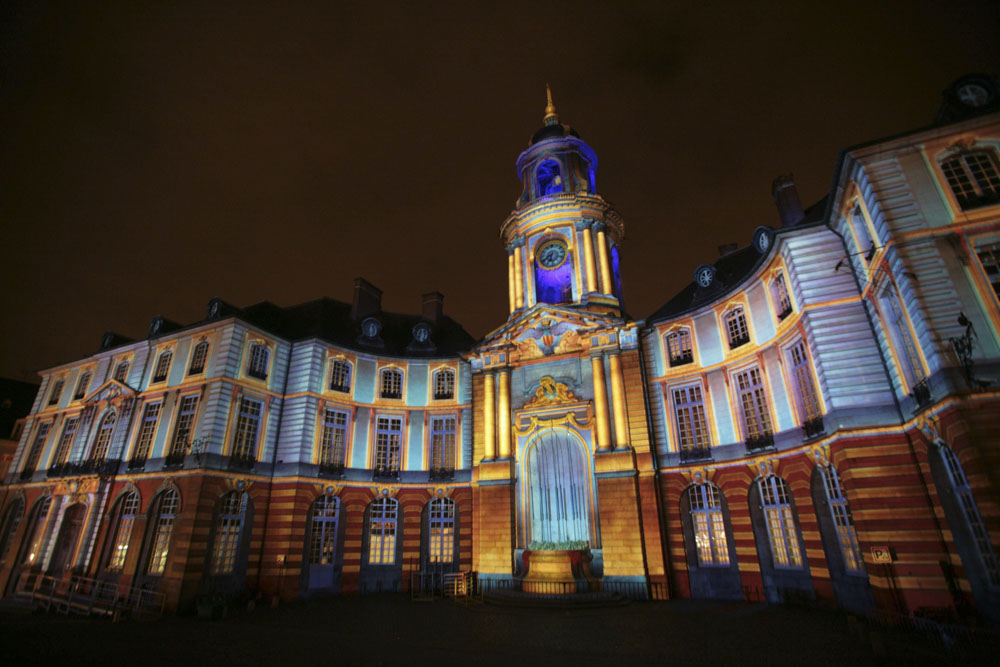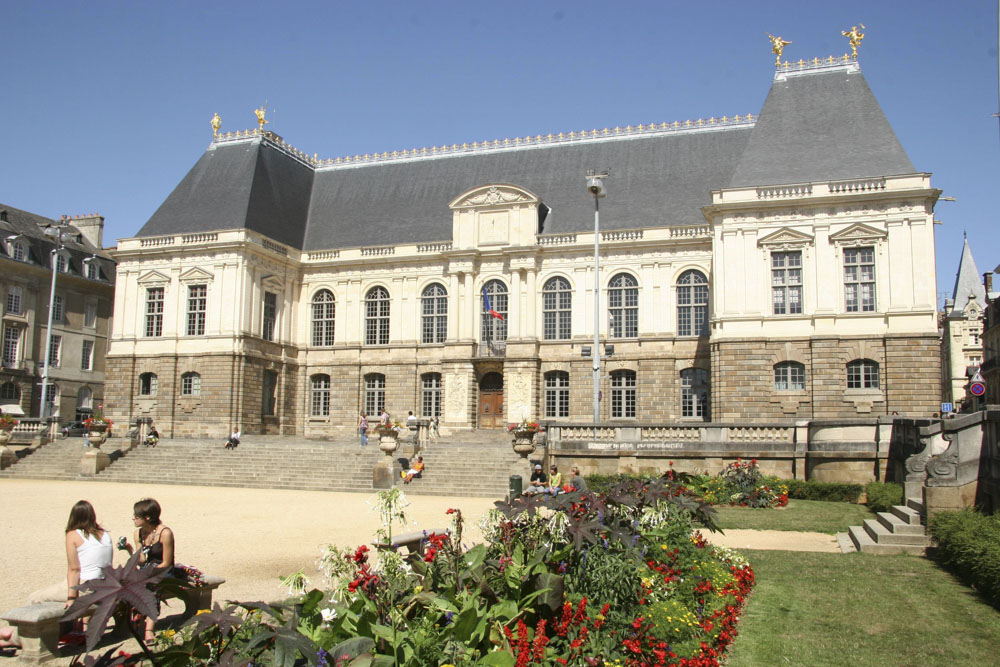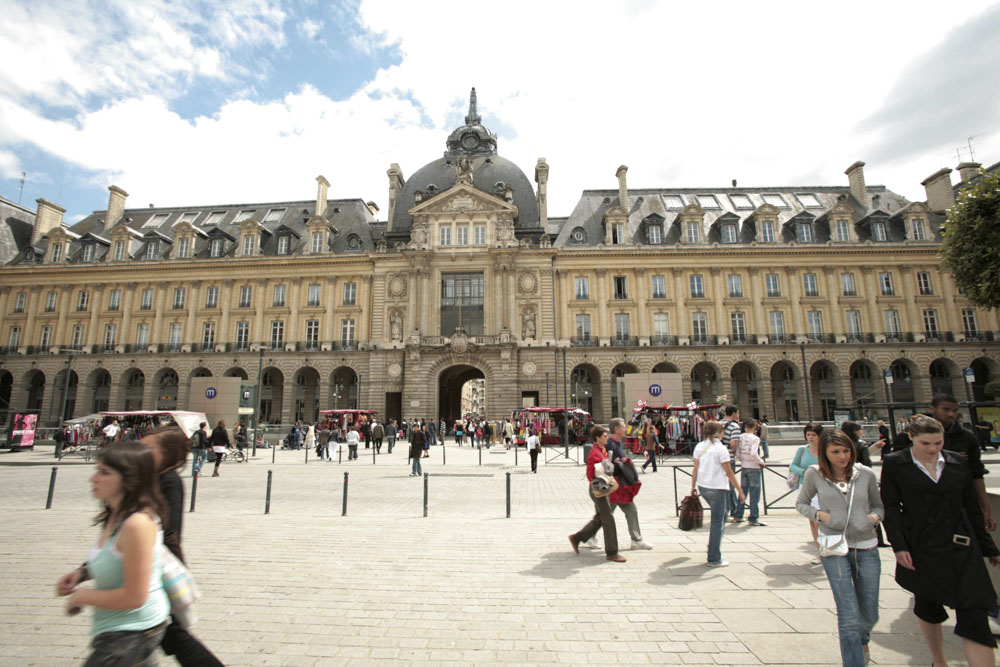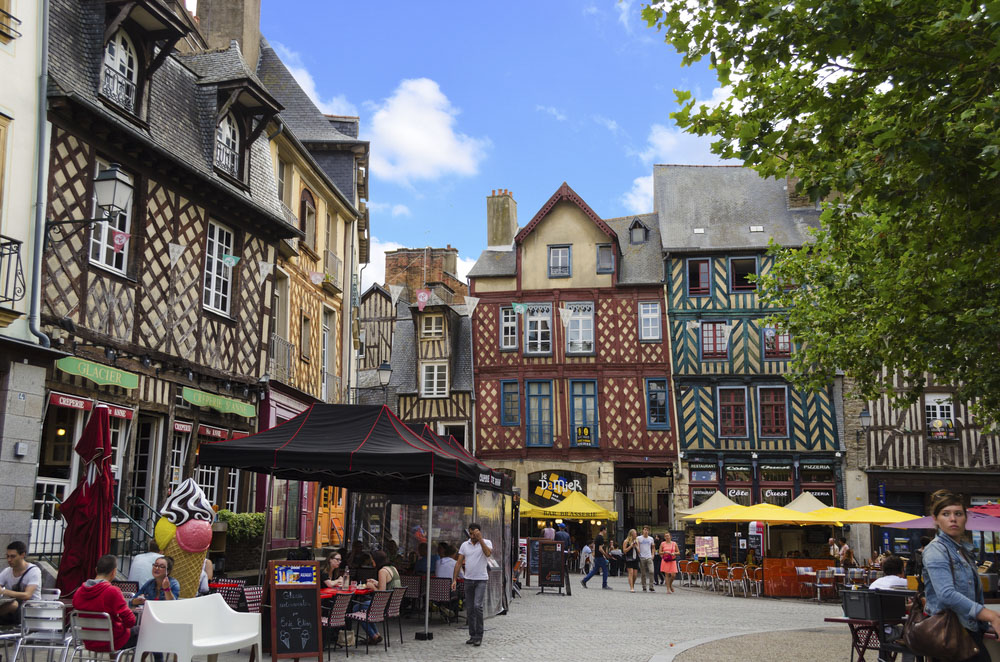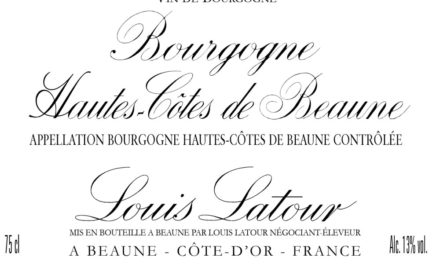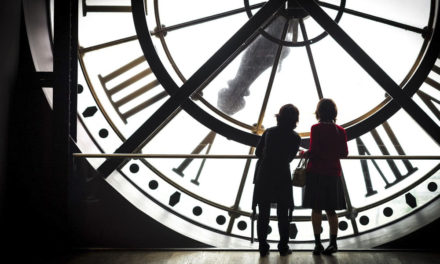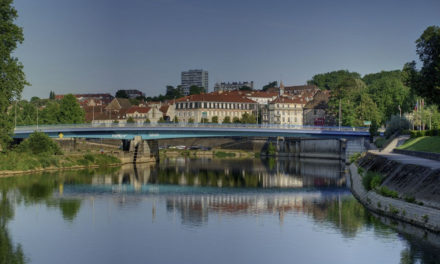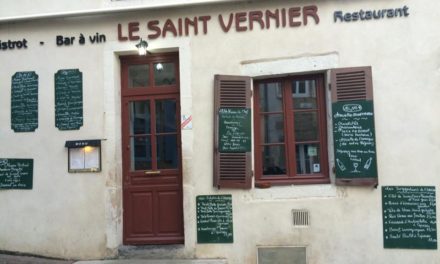Rennes is the capital of Brittany in north western France, as well as the Ille-et-Vilaine department. It is a medium sized town with 240,000 inhabitants (known as Rennais), a third of which are students. Much of the city has been modernised and there is a new shopping mall located in the centre called La Visitation which is patronised by locals and students alike. A busy, thriving city, Rennes has much to see and do. Plenty of restaurants and shopping facilities, there is a buzz throughout the year. Brittany’s culinary history has always delighted the most discerning palates and the quality and variety of its produce has made it the second most gastronomic region in France. Local industries include car manufacturing and telecommunications.
Book a Hotel in Rennes
History
Rennes derives its name from a Celtic tribe called the Riedones. Rennes sits on a hill at the confluence of the Vilaine and the Ille rivers and was the political and religious centre covering most of Brittany. It was conquered by Julius Caesar in 57BC and was quickly ‘Romanised’ with the benefits of peace and superior development. As the Empire weakened with attacks from German tribesmen, strong fortifications were constructed using red clay brickwork which gave the town the nickname The Red City. At the time of Saxon attacks in sub-Roman Britain, many refugees fled to France and thus the region became known as Little Britain and then Brittany. In 851 AD the Bretons were strong enough to declare full independence under the Dukes of Brittany.
Whilst France and England struggled for supremacy, Brittany recovered from the devastation of civil war and came into its golden age in the 15th century. With the marriage of Anne, Duchesse of Brittany to Charles VIII, the Duchy became part of France via the dowry of her daughter in 1514. One of the rights secured in these negotiations was the right to have a separate parliament which increased the importance of Rennes. It became the administrative capital of Brittany in addition to its military role and attracted the intellectuals and nobles of the region.
The Great Fire of 1720 gutted the centre of the city and 900 buildings were destroyed. The project of rebuilding Rennes was directed by Louis XV’s personal architect and the present day layout of the city dates from this time. The 19th century saw the further development of Rennes into an industrial city and the university was established. During World War II, Rennes was spared much of the destruction by the Germans and became an administrative centre of the Occupation of Brittany. During the D-Day build up however, Rennes was badly bomb damaged causing hundreds of deaths. The city was finally liberated in 1944. A massive plan of reconstruction was begun and the modern zone to the south of the city was developed. The Citroen works were built in 1957 and the expansion of the universities and specialised research institutes has firmly placed Rennes at the forefront of education and technological research, helping it to become the third fastest growing city in France.
Attractions
One of the most restful places to visit within 10 minutes walk of Rennes is the Parc Thabor. The Jardin du Thabor was the kitchen garden of the Benedictines and it is a park of natural beauty with a stunning collection of plant life including hundreds of species of roses and tropical, African and European trees. Other rare plants and ornamental flowers cover acres of garden in a tranquil setting which is well worth a visit. To add to the botanical interest, there are also lots of small parakeets and budgerigars on view. Nearby is the Notre-Dame-en-Sainte-Mélaine church which was the church of the Benedictine abbey. The only original parts that remain are the transept and the tower.
Rennes is a city for lovers of food and every Saturday morning, France’s second largest market is held in the centre of town where you can buy fruit and vegetables as well as a vast selection of fresh fish at the Poissonnerie. There are over 300 producers with colourful stalls located in the Place des Lices selling specialities of the region including Coucou de Rennes chickens, Petit Gris melons, local cider and unsalted butter. The Place des Lices is a square surrounded by ‘hôtels particuliers’ which were the residences for members of Parliament built in a medieval style. Today, it is full of lively cafés and bars with tables outside and is the social meeting point for local people.
Rennes has invested heavily in arts and culture. The Fine Arts Museum housed in the former university hall at 20 Quai Emile Zola was inaugurated in 1855 which became the Palais des Musée in 1911. It has an excellent collection of paintings by major artists including Picasso, Verones, Rubens and Chardin. However, the museum’s most famous picture is “The Newborn” by Georges de la Tour. The Palais du Commerce is the largest building in Rennes, built on the bank of the Villaine river, it is now the Post Office.
The Parlement of Brittany was a sovereign court of justice under France’s Ancien Régime, with a seat at Rennes established in 1655. The last building to house the parlement is now the Rennes Court of Appeal. It suffered severe fire damage in 1994 during a fishermens’ demonstration but restoration work has enhanced the 17th century building and some of the prestigious paintings are now displayed in their former glory.
Les Champs Libres is a brand new building in which you will find the Museum of Brittany with three permanent exhibitions, the Espace des Sciences with the Planetarium, the City Library and is a major centre for culture in Renne and its metropolitan district. Its a fascinating place with a lot of exhibitions, forum and debates. There is also an outside cafe overhanging Place Charles de Gaulle which is a good place to meet and relax amongst like minded people. La Criée is a contemporary art centre located in Place Honoré Commeurec in the centre of Rennes. Although this spacious building exhibits mainly plastic arts, it also welcomes living performances, choreography and design.
Ecomusée du pays de Rennes is found at La Bintinais farm, part of which dates from the 16th century. This rural museum tells the story of the history, science and techniques, lifestyles and agriculture of the Rennes area over five centuries. It is a vast exhibition covering a 15 hectare area featuring tools, furniture, costumes and an animal trail together with an audiovisual display.
Thursdays in Rennes are traditionally ‘student’s day’ as many of them go back home for the weekend. There is a vibrant night life and, to contain the enthusiasm of the students, many concert halls and public places offer free activities which include sports, visual arts, street entertainment and music festivals (particularly Les Transmusicales). Les Tombées de la Nuit is an art festival which takes place in the first week of July and includes the spirit of the young with eating and drinking on the terraces of the restaurants and cafés . Rue Saint Michel has bars on both sides of the street and is locally known as “the rue de la soif” which literally means Street of Thirst. Quartiers d’été is an outdoor festival organised by volunteers held during the third week of July.
Rennes is home to Stade Rennais FC who play football at Route de Lorient in the French Premier League.
Accommodation & Restaurants
Accommodation in Rennes is plentiful and good value. The Mercure Rennes Centre Parlement, in the city centre was originally a printing works. Located on a quiet street this is a comfortable residence within easy walking distance of museums and shopping. Hôtel Le Sévigné is located near the train station and a short walk from the historic centre of Rennes. Close to the picturesque streets of the old town and restaurants it is a convenient hotel for exploring the city.
Le Galopin at 21 Avenue Jean has an old fashioned Parisian charm. A gorgeous French brasserie serving locally sourced fish with an interesting menu including a comprehensive wine list. Good service and a traditional warm welcome. There are several recommended créperies including Créperie La Gavote and Créperie Ouzh-Toal which serve excellent Breton specialities.
La Coquerie at 156 rue d’Antrain has superb cuisine in the spirit of French gastronomy and is very popular with the locals. It is totally devoted to the French national symbol, the cockerel which appears on all the walls – and several of the menus. La Fontaine aux Perles is in a manor house situated in peaceful wooded gardens with a pretty terrace. Its reputation is based on fresh local produce and fine wine.
Transport
Rennes is one of the smallest cities in the world to have a metro. There is only one line which runs north-west to south-east via the city’s SNCF railway station, with 15 stations.
By rail: TGVs from Paris (Gare Montparnasse) take just over two hours to Gare de Rennes and leave nearly every half an hour. There are also direct trains (4 per day) from Paris Charles de Gaulle airort which take approx. 3 hours. The Rennes train station also provides a train service to Nantes, Brest, Quimper, St. Brieuc and throughout Brittany.
By air: Rennes airport has budget flights from several UK towns (Southampton, Belfast, Birmingham and Exeter) and from Ireland. The airport is 5km away from the city centre. Dinard/Pleurtuit/Saint-Malo airport, roughly an hour’s drive away, is another budget option with connection to London .

